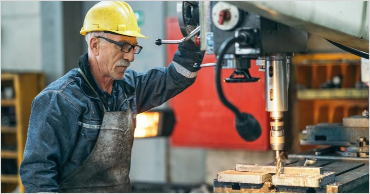
Often, the conversation on diversity in the workplace starts and stops at race, gender, or culture. It seldom extends to cover age, even though it should. Age diversity is a valid dimension, like any other, that should not be overlooked.
While it’s true businesses now solely focus on attracting young talent, harnessing the wealth of wisdom and experience that older workers bring need not be sidelined in the process. Especially not unintentionally.
As older workers exercise their right to continue being a part of the workforce way past the traditional retirement age, it’s time we challenge outdated views and embrace the value of intergenerational teams.
Ageism: An Often Overlooked & Problematic Bias
Take a look at any workplace, and you will find that older employees are not treated quite the same as their younger counterparts. In fact, chances are the older an employee gets, the more likely they are to be a subject of negative assumptions around their age. These assumptions can severely limit their professional opportunities and growth.
The general stereotypes regarding older workers might result in:
- Early and unnecessary exit from the workforce
- Limited advancement and promotions
- Poor access to workshops concerning skill development or internal ongoing training sessions
It’s clear to see how problematic and uncalled for these constraints can be. Aging, after all, is a deeply personal experience and does not guarantee the diminishing of one’s capacity to work. Needless to say, it’s not fair to judge one’s professional performance purely on the basis of their age. In the same way, it’s not ethical to base expectations on race or gender. The basic principles of human rights demand that each person be evaluated as an individual with equal access to opportunity, irrespective of their age.
Debunking Common Myths About Older Workers
We have reached a point where we no longer entertain false ideas such as that women are bad drivers, or that they are less ambitious or risk-averse. Of course, a small section of society still carries these outmoded ideas close to their chest, but the majority knows the truth. If we could get ourselves to a stage where we could bust myths about women in the workplace, we can do the same for older employees in the workplace, too. It’s time to change the tide. Here’s a list of myths about older workers who are best retired.
Myth 1: Workplace injuries are commonplace when it comes to older employees.
Reality: Older workers tend to be more careful and less reckless while working, which reduces their chances of getting injured on-site. They report fewer work injuries as compared to many younger groups.
Myth 2: They need more sick days and often show up to work late.
Reality: Research indicates that older workers are not only more punctual but tend to have a lower absenteeism record as well.
Myth 3: They resist learning and struggle to pick up new skills.
Reality: They might take a little longer to learn something new, but older workers are fully capable of acquiring new skills. More so in settings where their learning preferences are accounted for during company-wide training programs.
Myth 4: They shy away from new technologies.
Reality: Older workers can adopt new technologies if they get the right support and a learning environment that matches their pace and learning style.
Myth 5: Making older employees a part of training programs is pointless since they will retire soon.
Reality: Older employees are more likely to be loyal to their jobs, thus effectively reducing their chances of switching roles. This makes them a long-term valuable asset that deserves support and appreciation.
Myth 6: Aging decreases productivity.
Reality: Physical capacity may shift over time, but that doesn’t necessarily lead to a dip in productivity. Most workers maintain strong productivity levels well into their 70s, especially if their roles are less physically demanding or knowledge-based.
Myth 7: They don’t connect well with customers.
Reality: Interpersonal skills and emotional intelligence are two valuable elements older employees bring to the table. These allow them to build rapport with all kinds of customers, thus establishing trust in the process.
Myth 8: They are resistant to change.
Reality: Older workers are typically cautious and thoughtful, traits which enhance accuracy and workplace safety.
Take A Moment To Reflect
Before making assumptions about a colleague or an employee based on their age, pause to reflect on your perspective. Are your assumptions fair? Would you like to be treated the same way when you get to that age? Take into account the future trajectory of your career and how you would like to be perceived professionally decades down the line.
Age diversity goes beyond fairness. It helps in building stronger, more resilient teams. Every generation has something unique and worthwhile to offer, and when we recognize that, we all benefit.

